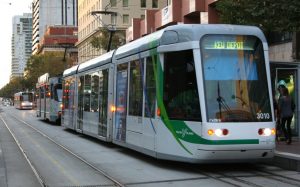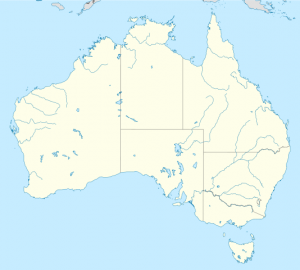What Makes Real Estate Valuable?
What makes real estate valuable? What makes anything valuable, for that matter?
Have you ever considered why oil has value? Why is petrol less valuable now than it was six months ago? What about gold and diamonds? Isn’t it just shiny metal and sparkly rocks?
Whether we’re talking about oil, gold, diamonds, real estate or cigarettes in a prison, the value of any asset comes down to human emotion, driven by two basic factors: desire and scarcity; or to use economic terms, demand and supply.
Nothing can have value unless a lot of people desire it. People desire petrol because it’s the primary way we power transportation. Once we create and distribute a more efficient means of powering automobiles, petrol, and therefore, crude oil, will be far less valuable.
 Real estate is also desirable because people need a space to occupy. Real estate with a dwelling can be even more desirable. Why? Because while people need space, they also need shelter. This basic necessity is the foundation of real estate’s value.
Real estate is also desirable because people need a space to occupy. Real estate with a dwelling can be even more desirable. Why? Because while people need space, they also need shelter. This basic necessity is the foundation of real estate’s value.
But while desire or demand is the foundation of an asset’s value, it’s not the total picture. The degree to which an asset has value is determined by scarcity, or the supply of the asset.
Generally the rarer something is, the more valuable it is. Gold has value, not only because people want it, but also because there’s a limited amount of it in the earth. Oil is the same. It took millions of years to create, and we seem to be running through it relatively quickly.
Herein lies the ultimate determining factor of the value of real estate. As long as people desire it, which they always will – in some locations more than others – then it is the scarcity, or the supply of available real estate, that will drive value. In case you weren’t aware, they’re not making any more of it.
Now you might be thinking, “Does this guy think I’m an idiot? This is obvious.” However, people seldom consider the implications of scarcity in depth, which is the primary driving force behind real estate value. If we can harness this knowledge and apply it to our buying decisions, we can position ourselves for greater profits in the future.
The following are six different driving forces of the value of real estate, all of them hinging on scarcity in the property market. If you’ve ever read any of Steve’s books, these may sound familiar to you:
1. Lifestyle And Convenience
 People don’t just desire space to occupy and a roof over their head. People want space and shelter in an area that makes life enjoyable.
People don’t just desire space to occupy and a roof over their head. People want space and shelter in an area that makes life enjoyable.
Where I live in Wodonga, people are willing to pay more per square meter to live in the middle of a golf course.
The convenience of hopping in a golf buggy and riding to the first tee is enough to motivate some people to pay a premium. Because there’s only 18 holes, there’s also the scarcity factor.
Back in 2007, my mate bought a really nice elevated one-acre block overlooking Wodonga. The purpose was to build their dream home. Just before they began construction, someone offered them double what they paid for it. Why? Because there were no more blocks in that area with views of the city.
For all the same reasons, this is why land nearest to the CBD of your state’s capital is dearest. People want to live close to where they work. It’s a lifestyle and convenience decision that primarily drives the value of real estate in those areas.
If you can begin to think now what this type of scarcity will look like in 20 years, then you’re on the path to buying properties that will experience significant capital appreciation during that time.
2. Potential Investment Return
 Home buyers who are purchasing with lifestyle motivation must also compete with investors who buy with profit motivation.
Home buyers who are purchasing with lifestyle motivation must also compete with investors who buy with profit motivation.
In regional areas, property values have increased in part thanks to the ripple effect of growth in Melbourne and Sydney. As properties have become less affordable in capital cities, rental yields have become much less attractive.
Investors are looking for higher yielding investments in regional areas where rental demand is high, but where properties are cheaper.
This same dynamic also takes place in neighboring suburbs around capital cities. Investors who live in the more well-respected areas have started buying investment properties in lower-end suburbs on the other side of town. This investor demand diminishes supply, making properties for sale in those areas more scarce; hence, driving up values.
3. Planning And Zoning Restrictions

Photo by NordNordWest / CC BY-SA
Local councils face the balancing act of keeping areas desirable as places to live, while also not being too stringent and driving potential developers away.
Councils that are a royal pain to deal with tend to scare developers away over time. This diminishes demand, which leads to an increase in supply, or an upsurge of properties on the market, which drives down value.
Of course, if it’s already a highly desirable suburb near the CBD, the council may not care what developers think. There may already be enough lifestyle and convenience demands driving the scarcity of the market.
The opposite is also true. Where councils are more accommodating to developers, this in turn brings more buyers to the market, which diminishes supply, and increases value. We’ve experienced this on the Albury side of the border where the council town planners tend to be fair and balanced in their approach.
4. Density
 Other factors that impact investor demand in an area are the building codes that determine the maximum density of housing.
Other factors that impact investor demand in an area are the building codes that determine the maximum density of housing.
Developers know that the more dwellings they can fit onto a block of land, the greater the overall potential of return. Therefore, the areas where city council permits denser development may be in shorter supply.
The density factor also comes into play in dealing with existing developments. Over the past few decades, building codes have become stricter, which means older developments will have a greater density of dwellings. In general, the more units you can fit on a block, the more growth there will be over time, because these properties will attract investors and will become scarce.
5. Dwelling Style Or Appeal
 While the majority of scarcity relates to the land on which a dwelling exists, certain styles of homes may be more appealing than others, leading to greater scarcity.
While the majority of scarcity relates to the land on which a dwelling exists, certain styles of homes may be more appealing than others, leading to greater scarcity.
Period style homes with architectural character, for instance, are harder to come by and may appreciate faster than other homes in the same area.
What style of dwelling is in high demand, but short supply in your area? Federation style or art deco, or perhaps other appealing factors such as homes with hard wood floors or energy saving features like solar power or rainwater collection tanks? Talk to local real estate agents and ask them which properties buyers tend to be willing to pay a premium for.
6. Land Size
When it comes to real estate, the value of a property is primarily in the land, not in the dwellings on the land. It makes sense then that larger blocks generally command a premium price and will often appreciate at a greater rate.
 Owner-occupiers want more land because of lifestyle reasons. More space means room for a shed, an area for the kids to play or the potential to put in a swimming pool or a tennis court.
Owner-occupiers want more land because of lifestyle reasons. More space means room for a shed, an area for the kids to play or the potential to put in a swimming pool or a tennis court.
For investors, more land equates to greater profit potential. A larger block means more options for subdivision and development. Where I live, subdivide-able blocks are becoming scarcer. It seems investors are snapping them up before they’re even advertised. Wherever you invest, be aware of council regulations on minimum block sizes and network with local agents.
Conclusion
Scarcity is the primary driving force behind real estate value. The goal of understanding where scarcity exists in your area is to use this knowledge to focus your investing and super-size your growth potential.
In our Property Apprenticeship course, Steve McKnight goes much deeper into teaching about supply and demand and it’s impact upon the value of real estate. A fundamental understanding of economics is the foundation of a solid wealth creation plan through property.





Got something to say? Post a comment...
You must be logged in to post a comment.